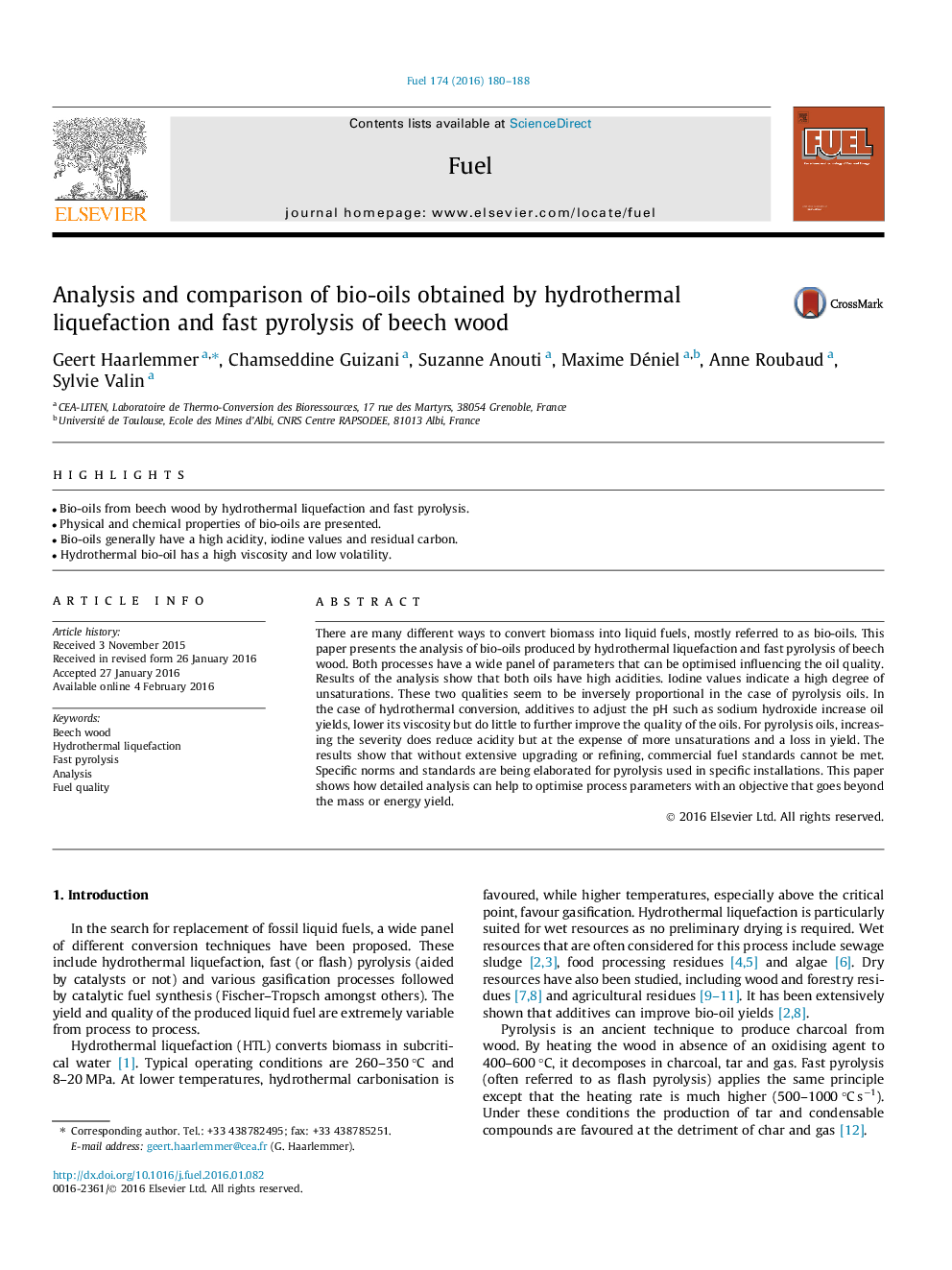| Article ID | Journal | Published Year | Pages | File Type |
|---|---|---|---|---|
| 205045 | Fuel | 2016 | 9 Pages |
•Bio-oils from beech wood by hydrothermal liquefaction and fast pyrolysis.•Physical and chemical properties of bio-oils are presented.•Bio-oils generally have a high acidity, iodine values and residual carbon.•Hydrothermal bio-oil has a high viscosity and low volatility.
There are many different ways to convert biomass into liquid fuels, mostly referred to as bio-oils. This paper presents the analysis of bio-oils produced by hydrothermal liquefaction and fast pyrolysis of beech wood. Both processes have a wide panel of parameters that can be optimised influencing the oil quality. Results of the analysis show that both oils have high acidities. Iodine values indicate a high degree of unsaturations. These two qualities seem to be inversely proportional in the case of pyrolysis oils. In the case of hydrothermal conversion, additives to adjust the pH such as sodium hydroxide increase oil yields, lower its viscosity but do little to further improve the quality of the oils. For pyrolysis oils, increasing the severity does reduce acidity but at the expense of more unsaturations and a loss in yield. The results show that without extensive upgrading or refining, commercial fuel standards cannot be met. Specific norms and standards are being elaborated for pyrolysis used in specific installations. This paper shows how detailed analysis can help to optimise process parameters with an objective that goes beyond the mass or energy yield.
